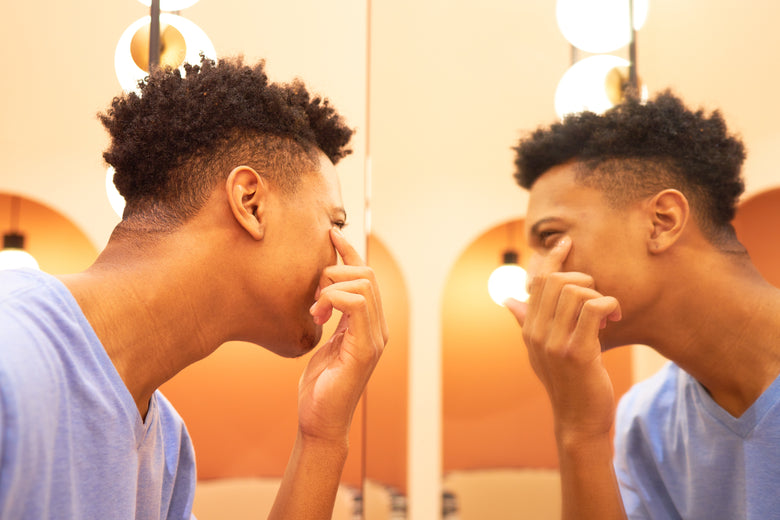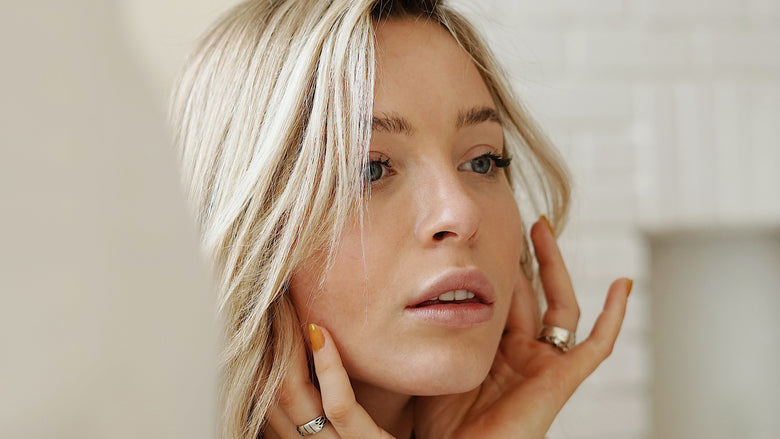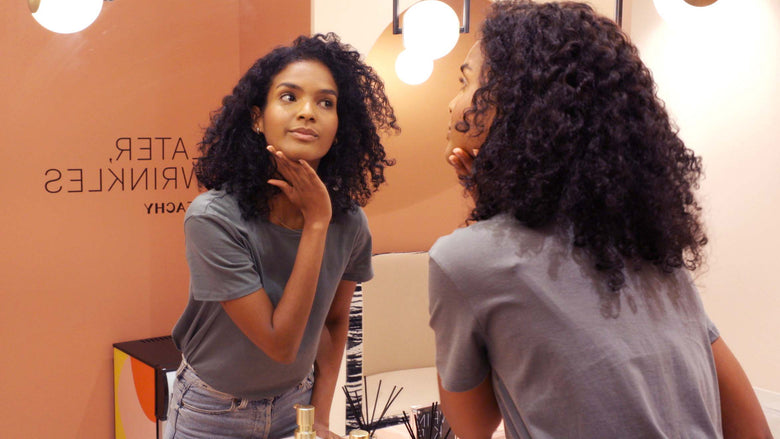Sunshine is one of summer’s greatest features. The effects it has on our skin, not so much!
Fine lines, wrinkles, and hyperpigmentation are all byproducts of sun exposure, which account for 80% of facial aging. At Peachy, we recognize skincare for the long game that it is. How to sidestep the sun’s harsher effects?
1 | Limit time outside
The most effective preventative measure for fine lines, wrinkles, and premature aging is to keep direct exposure to a minimum. Does it mean going out only under the protection of dusk or cloud cover? Of course not! Exposure is a natural part of living in the day-to-day.
Still it bears saying that limiting direct UV exposure is the single best method to keep fine lines in check and skin health at its best for years to come.
2 | Make your own shade
Some days are just going to be unbearably sunny, and it can pay to be proactive about managing UV exposure when this is the case. Umbrellas, wide-framed sunglasses, wide-brimmed hats or caps, and long-sleeve shirts are all fantastic options to keep the sun off your skin.
3 | Go broad-spectrum
One of the surest ways to keep wrinkles at bay? Find a quality SPF suited to your skin and wear it daily. Premature aging from sun exposure can start to occur within 3-5 minutes of being in the sun, well before you’d notice a sunburn forming.
Tip: Daily isn’t seasonal, and neither is photodamage! Warm or cold, sunscreen is a year-round necessity for truly preventative skincare..
4 | Apply and repeat
The second most important rule of daily-use sunscreen is routinely reapplying while you are out. One trusty formula to help with dosing is the teaspoon-shot glass rule:
- One teaspoon of sunscreen to the face and neck and one shot glass full (about an ounce) for exposed areas of the body.
Be sure to apply sunscreen 15 to 30 minutes before sun exposure, then wait 10 to 20 minutes before you get dressed to ensure your clothes don’t absorb it.
Reapply sunscreen at least every two hours, or after every water exposure or sweating – even if yours is water-resistant.
The science of SPF
For those looking to prevent wrinkles, sunscreen is a necessary part of the equation. Beyond protection from UV exposure, broad-spectrum SPF everyday over time may effectively reverse prior photodamage.
Chemical vs physical
A key difference between chemical and physical-filter or “mineral” sunscreens is how the product interacts with incoming UV.
Physical filter – This sunscreen acts as a protective layer, reflecting UV rays away from skin. Zinc oxide and titanium dioxide are the two compounds used in physical filter products.
- Notably, the FDA updated its sunscreen regulations in 2019, finding that these ingredients were the only two that could be classified as being safe and effective based on the information available.
Chemical filters – Rather than reflecting UV as physical filters do, chemical sunscreens work instead by absorbing the sun’s rays. However, findings have come to light more recently that chemical filters may also show up in the bloodstream.
- A recent study testing for absorption levels for six active chemicals common in many sunscreens discovered that all six chemical filters were found in plasma concentrations exceeding FDA recommendations. The clinical effect on these higher concentrations isn’t yet known, and there is still more research needing to be done.
While there are enough sunscreens out there to fill a galaxy, we feel the best option is the one you love using. If you already have a product you use daily, keep it up! If you’re looking around, we recommend opting for products that use physical filters.
What is SPF anyway?
Standing for “Sun Protection Factor,” SPF measures the level of UVB protection in your sunblock. (UVB is the main cause of sunburn and non-melanoma skin cancer.) To protect against both UVB and UVA rays tied to aging and cancer in skin, a broad-spectrum sunscreen is essential.
Contrary to belief that more is more, a higher SPF rating beyond 50 isn’t affording extra protection. It may actually pose health risks, with higher chemical concentrations penetrating the skin. Our recommendation? Stick with what works and pick products with SPF between 30 and 50. It’s a range that’s effective for all skin types, even those sensitive to sunburns.
All of our sunscreens at Peachy are mineral-based and have SPFs ranging from 30 to 50. Where our products go beyond UV protection:
- Cruelty-free
- Paraben-free
- Reef safe
- Oil free
- Non-comedogenic
- Hypoallergenic
- Not leaving a white cast
Make it a summer of wrinkle prevention
Sunscreen is a must-have for keeping photodamage and future wrinkles in check, but is it the only measure? Where greater complexion care is the goal, it certainly isn’t.
Retinoids
Prescription retinoids are a vitamin A derivative – a night cream – capable of increasing collagen production by 80%, limiting collagen breakdown, and diminishing the appearance of fine lines from sun exposure. Just like mineral sunscreens, prescription retinoids come carefully studied, FDA-approved, and are highly effective.
Peachy’s retinoid is uniquely formulated with Vitamin C, Niacinamide, and Hyaluronic Acid. Vitamin C is a potent antioxidant that can prevent changes associated with photoaging or damage caused by the sun.
- Summer safe – While retinoids are known to cause skin dryness and increased sensitivity, there’s no evidence it directly increases photosensitivity. As with any season, we recommend washing your face in the morning with a mild cleanser and applying sunscreen!
Botox
Shielding skin from photodamage to prevent wrinkles is one measure, lessening their definition with retinoids is another: Botox diminishes wrinkles while effectively reversing their advance.
As a neuromodulator, preventative botox gently relaxes muscles below the skin tied to wrinkling. Relaxing targeted muscles means relaxing the skin above it and in doing so prevents the transition of dynamic lines from becoming static lines.
Like mineral sunscreens and prescription retinoids, botox comes FDA-approved and has been widely used since the 1970s.
- Summer safe – Vigorous exercise and heavy sweating aren’t recommended for 24 hours after treatment to prevent the botox from migrating away from the targeted muscle groups. Not that you can’t sweat at all, just be careful immediately following treatment.




